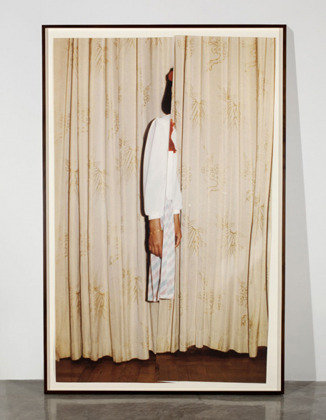Girls can tell
dal 26/9/2013 al 1/2/2014
Segnalato da
Dirk Bell
Juliette Blightman
Shannon Bool
Kajsa Dahlberg
Nina Hoffmann
Verena Issel
Maria Loboda
Anna Ostoya
Marlo Pascual
Seb Patane
Jeremy Shaw
Dirk Stewen
Susanne M. Winterling
26/9/2013
Girls can tell
GAK Gesellschaft fur Aktuelle Kunst, Bremen
The group exhibition displays works by a generation of artists born after 1970 that exemplify the shifted interaction with feminist issues in contemporary art. There are often feminist undertones, and at time feminist issues are expressed subliminally through the use of materials and techniques and employ a certain elegance of form and light aesthetic in order 'to use these weapons'.

Nobody would seriously maintain that feminism’s urgent issues have been solved through lived social equality.
It could, however, be the case that the focal points of feminism have shifted. What the Feminist Movement in
the 1970’s and later the Punks in the 1980’s fought for has at least in part become a social reality, and that has
lead to other issues taking centre stage. Accordingly, contact and interaction with early feminists and their
doctrines has shifted significantly––for the generations born after 1970, the necessity of constantly standing
up for feminist viewpoints has given way to a natural consciousness and to an omnipresent “live with it” feeling.
The art theorist Monika Szewczyk speaks of a “profound absorption of those lessons of feminism that allows us
to proceed without naming what we do––a pause in the forging of weapons in order to use them.” 2
That in no way means that the social need for a feministic attitude no longer exists today. However, it can be
stated that the tone of its expressions has changed. That they have perhaps––should one dare to say––become
lighter, without having lost precision. That a tone has been established that is sufficiently sovereign to allow for
occasional doubts in feminist doctrines without immediately smelling the scent of treason against its
fundamental idea. Moreover we have reached a point where emancipation is no longer an issue for women alone;
men are increasingly engaging with issues relating to it.
The group exhibition Girls can tell displays works by a generation of artists born after 1970 that exemplify the
shifted interaction with feminist issues in contemporary art. There are often feminist undertones, and at time
feminist issues are expressed subliminally through the use of materials and techniques and employ a certain
elegance of form and light aesthetic in order “to use these weapons.” Approaching this field from diverse
perspectives, the works presented in Girls can tell traverse a terrain of media which encompasses painting,
photography, drawing, installation, ready-made work, film and sculpture.
Juliette Blightman, for example, has cut a grotesque face into the fabric of a petite pink dress with a floral
edging, exposing a background that highlights both issues of female adolescence and violence against women.
The works of Dirk Bell, Anna Ostoya, Marlo Pascual and Dirk Stewen, meanwhile, focus largely on pictorial issues,
while offering subtle perspectives on the question of the place of women in society and art history. Shannon
Bool’s work oscillates between the contexts of art history and everyday culture, revealing shifts in the social
images of women while questioning the validity of motives of desire. Kajsa Dahlberg interviews a feminist
activist and translates this negation of classic attributions at a formal level in her elusive images. Nina
Hoffmann and Jeremy Shaw question the validity of conventional gender attributions. Maria Loboda presents a
seductively attractive bomb, linking her work through its title with images of modern, confident and educated
women. Verena Issel’s metaphoric images trace the history of female travellers and the challenges faced by
women seeking to pursue careers. In an effort to create a visual expression for systems of social repression, Seb
Patane represses the thoughts and emotions of Victorian women in a web of black lines. Susanne M. Winterling
stages a psychological duel between two different images of women which remains undecided.
Girls can tell will be accompanied by an extensive serie of lectures that will reflect the assumption of the
exhibition by different perspectives from art history, theorie, or writing (the serie is developed by Yvonne
Bialek).
For further information, please contact:
Yvonne Bialek, T.: (+49) 0421/500897, E-mail: presse@gak-bremen.de
1. The title of this exhibition refers to an album by American rock band Spoon from 2001.
2. Monika Szewczyk. “Flirting with Feminism”, in exh. cat. Shannon Bool. Inverted Harem, CRAC Alsace, GAK Gesellschaft für Aktuelle
Kunst Bremen and Bonner Kunstverein, 2011, p. 12.
Press Conference: Thursday, 26th September, 11 am
Opening: Friday, 27th September, 7 pm
GAK Gesellschaft für Aktuelle Kunst
Teerhof 21 - D-28199 Bremen
OPENING HOURS
Tuesday to Sunday 11 - 18, Thu to 21
ADMISSION
Normal: 3 - Euro
Family: 6, - Euro
Reduced: 2 - Euro (students, seniors and artists, the unemployed, and the members of the BBK Gedok)



